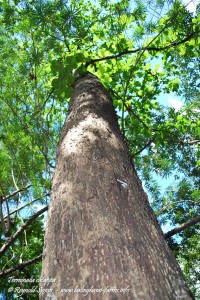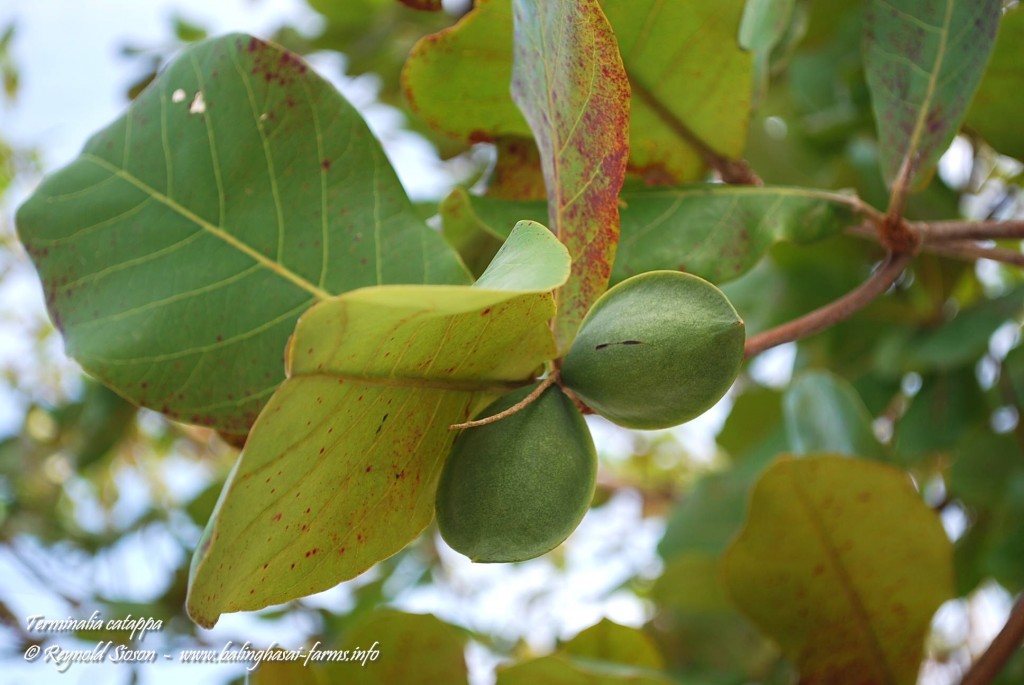 Photo specimen : Domesticated and semi-domesticated trees
Photo specimen : Domesticated and semi-domesticated trees
Specimen height : 14 - 18 m
Local name : Talisay
Trade names : Indian almond, Tropical almond
Botanical name : Terminalia catappa
Family : Combretaceae
Fruiting season : Fruits seen on January and August (probably year-round fruiting)
Traits : Buttressed; Deciduous; Drought tolerant; Fast-growing; Full-sun; Long-lived species; Low altitude species; Medium-sized tree; Salt spray tolerant; Spreading crown; Tolerant of infertile soil; Water-logging tolerant; Wind hardy
 Recommendations : Backyards; Boundary marker; Coastal stabilization; Edible gardening; Erosion control; Farms; Fruit collector’s; Honey tree; Landscaping; Large avenues, Large gardens; Living fence; Living post; Living trellis; Mangrove management; Nurse tree; Ornamental tree; Paper & pulp tree plantations; Pioneer species for reforestation of coastal areas; Plantations; Public spaces; Riparian management; Roadside tree; Shade tree; Timber belt; Urban greening; Wildcrafting; Windbreak
Recommendations : Backyards; Boundary marker; Coastal stabilization; Edible gardening; Erosion control; Farms; Fruit collector’s; Honey tree; Landscaping; Large avenues, Large gardens; Living fence; Living post; Living trellis; Mangrove management; Nurse tree; Ornamental tree; Paper & pulp tree plantations; Pioneer species for reforestation of coastal areas; Plantations; Public spaces; Riparian management; Roadside tree; Shade tree; Timber belt; Urban greening; Wildcrafting; Windbreak
Used for : Fruit pulp and seed kernel are edible (the nuts are important food source in the Pacific islands); Wine is made from fruit pulp fermentation; Timber for small constructions, interior work, veneers, plywood, musical instruments and furnitures; Firewood and charcoal
Native range : Tropical Asia (including the Philippines), Australia to the Pacific islands
National conservation status : Not threatened in the Philippines
Further reading :
Philippine Woods : Principal Uses, Distribution & Equivalent Woods in Asia Pacific (A. Ella, A. Tongacan, R. Escobin & F. Pitargue)
Species Profiles for Pacific Island Agroforestry (Terminalia catappa) http://www.agroforestry.net/tti/T.catappa-tropical-almond.pdf (262)

